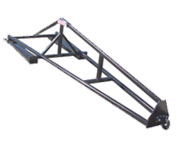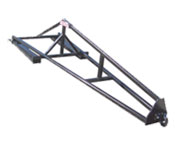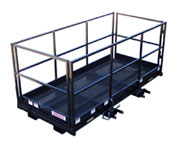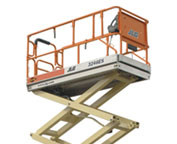
Forklift Brakes - A brake drum is wherein the friction is provided by the brake pads or brake shoes. The pads or shoes press up against the rotating brake drum. There are some different brake drums kinds together with certain specific differences. A "break drum" will usually refer to whenever either shoes or pads press onto the interior outside of the drum. A "clasp brake" is the term utilized to be able to describe when shoes press against the outside of the drum. Another type of brake, known as a "band brake" makes use of a flexible belt or band to wrap round the exterior of the drum. If the drum is pinched in between two shoes, it could be referred to as a "pinch brake drum." Like a typical disc brake, these kinds of brakes are somewhat uncommon.
Early brake drums, prior to nineteen ninety five, needed to be consistently modified to be able to compensate for wear of the drum and shoe. "Low pedal" could cause the needed modifications are not carried out sufficiently. The motor vehicle can become dangerous and the brakes could become ineffective if low pedal is combined with brake fade.
There are different Self Adjusting Brake Systems existing, and they could be categorized within two major types, RAD and RAI. RAI systems have built in tools that avoid the systems to recover whenever the brake is overheating. The most well known RAI makers are Bosch, AP, Bendix and Lucas. The most famous RAD systems include Bendix, Ford recovery systems, Volkswagen, VAG and AP.
Self-repositioning brakes generally use a tool that engages only whenever the motor vehicle is being stopped from reverse motion. This stopping method is suitable for use where all wheels make use of brake drums. Nearly all vehicles nowadays utilize disc brakes on the front wheels. By working only in reverse it is less probable that the brakes would be applied while hot and the brake drums are expanded. If tweaked while hot, "dragging brakes" could take place, which increases fuel expenditure and accelerates wear. A ratchet mechanism that becomes engaged as the hand brake is set is one more way the self adjusting brakes could function. This means is just suitable in applications where rear brake drums are used. If the emergency or parking brake actuator lever goes over a certain amount of travel, the ratchet improvements an adjuster screw and the brake shoes move toward the drum.
Located at the bottom of the drum sits the manual adjustment knob. It can be adjusted utilizing the hole on the opposite side of the wheel. You would have to go underneath the vehicle with a flathead screwdriver. It is very significant to be able to adjust every wheel equally and to move the click wheel properly as an uneven adjustment could pull the vehicle one side during heavy braking. The most effective way so as to ensure this tedious task is done carefully is to either lift every wheel off the ground and hand spin it while measuring how much force it takes and feeling if the shoes are dragging, or give every\each and every one the exact amount of manual clicks and then do a road test.
![]() Click to Download the pdf
Click to Download the pdf
Forklift Parts








Lift Parts Express
TOLL FREE: 1-888-695-7994
Boston, Massachusetts
forkliftpartsboston.com
Email Us
About Us



